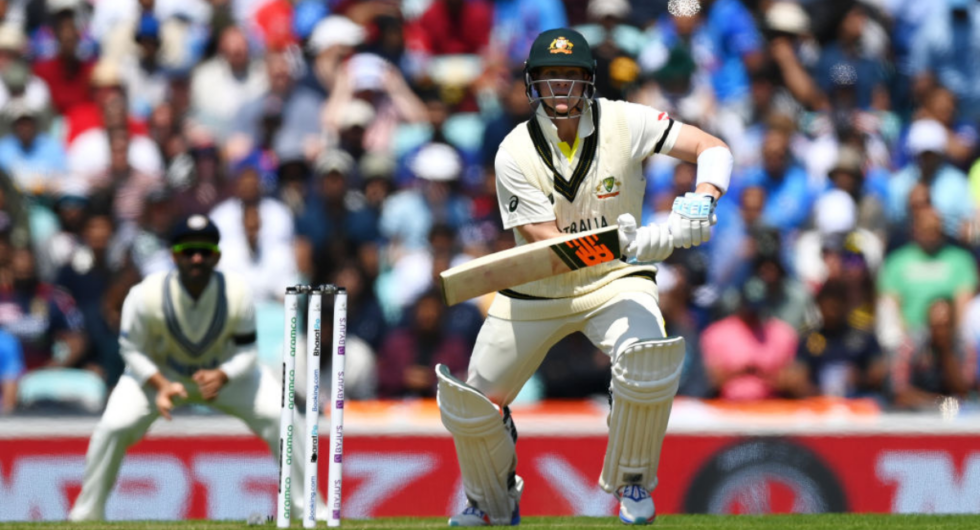Explained: The Shastri-inspired leg-gully strategy India have used against Steve Smith and Marnus Labuschagne since 2020/21

India have used the leg-gully on and off against Australia during the course of Day 1 of the WTC Final at The Kia Oval. While being a bit unconventional, this is a tried-and-tested strategy that has brought them success against the Aussies in the past.
India won the toss and opted to field first in the World Test Championship Final, given the overcast conditions overhead, and the green surface underneath. The decision seemed vindicated when Mohammed Siraj got Usman Khawaja to nick one in the fourth over of the innings.
Marnus Labuschagne and David Warner were battling it out against the new ball pair of Siraj and Mohammed Shami, with both of them testing the batters with nifty movement outside the off stump. Then something strange happened in the eighth over of the innings.
Siraj got one to bounce off length and hit Labuschagne on the gloves. The bat flew off his hand and he had to get medical attention. By the time he was ready to face the next ball, the fourth slip who had been stationed there since the beginning, had moved to a leg-gully position.
Teams generally resort to the leg-gully, or a leg-side dominant field much later into the innings, when they believe that the chances of getting a batter out the traditional way are low. Not India. Not against Australia. Not against Labuschagne & Co.
India’s historic success in the 2020/21 Border Gavaskar series in Australia was built on the back of a very specific leg-side dominant strategy that Ravi Shastri, who was the head coach of India at that point, had devised with Bharat Arun, India’s then-bowling coach.
Shastri & Co had observed before the tour that around 70-75 per cent of the runs scored by Steve Smith and Labuschagne were through the off-side.
“We had concluded after watching a lot of footage that a lot of their batters weren’t getting runs on the leg side, unless it was a short ball. Or via a nudge or off the inside edge of the bat,” says Arun in an excerpt from The Miracle Makers, a book on India’s historic triumph on that tour, written by Bharat Sundaresan.
With this plan that included bowling on the stumps with a packed leg-side field, India were able to restrict Australia’s scoring rate and made sure that Smith and Labuschagne, their two main batters, didn’t run away with games like they generally do in Australia.
Since then, they have not shied away from using this as an attacking tactic instead of as an afterthought, as is generally the case with the leg-gully and leg-side dominant fields.
On Day 1 of the WTC final, the leg-gully was first visible in the eighth over with Siraj using it against Labuschagne. Since then, it has made several appearances on and off, especially against Labuschagne and Smith.
Teams have tried using this tactic against Smith over the years, given his unorthodox technique where he shuffles across the stumps. Some have found occasional success like England did at The Kia Oval in the 2019 Ashes when they trapped him with a glance straight to leg-gully. However, none have utilised this plan as religiously and effectively as India have against Australia in the recent past.
They might have not had success with it so far in this Test match, but they know what they are doing, and it is not a sign that they have been desperate with no wickets in sight, as this plan might often make you believe.

